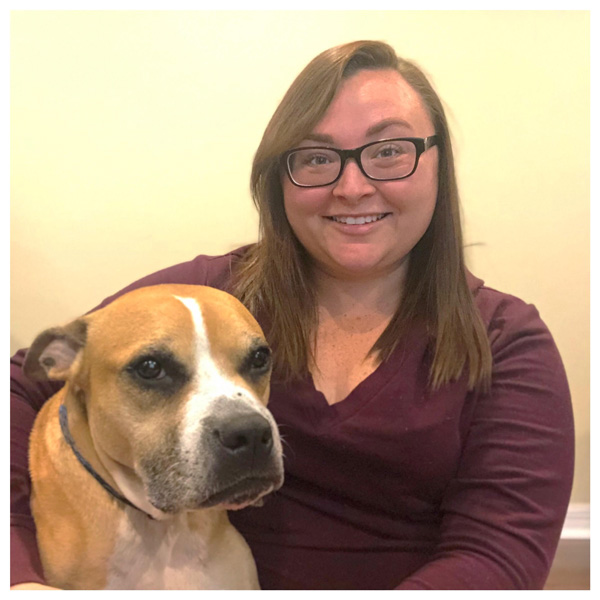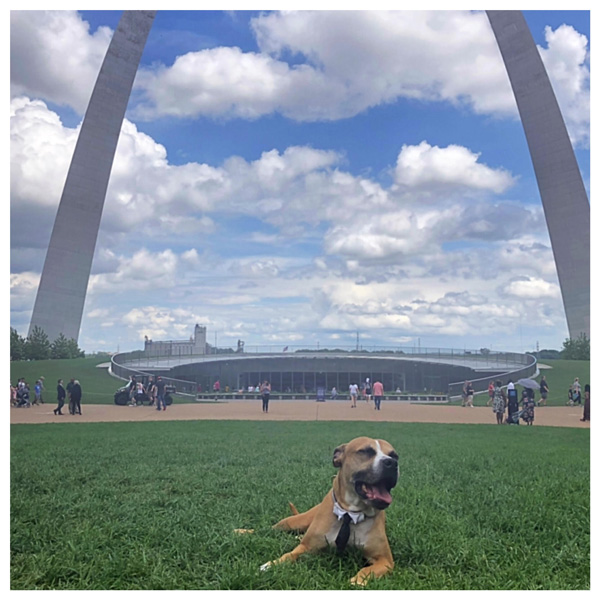

Sarah Hileman spent five years working in the insurance industry before she decided to go to optometry school. As she was saying goodbye to her former colleagues at her old job, some of her friends approached her and confessed to significant anxiety about going to the optometrist’s office. “I have never been afraid of going to the optometrists, but I do feel that way about going to the dentist, so I understood that,” she says.
Several years earlier, she had adopted Moe, a pit bull mix. Her college town of Gainesville, Florida, passed an ordinance that barred pit bull mixes from shelters, so all those remaining dogs needed to be adopted. She and other undergrad school students volunteered for the adoption weekend, but as the event reached its closing hours, Moe and two other dogs were still there. “I took him, and he’s been a great dog,” she says. She’d take him to visit her sick grandparents and saw how other patients loved seeing him. So Moe went through three levels of obedience training and is registered as a therapy dog.


Hileman recently completed her first year at Midwestern University, Arizona College of Optometry, and the thought occurred to her that perhaps she could combine her interests in vision therapy, occupational therapy and therapy animals.
That has led her to an idea for her capstone project, which she’ll begin in the fall with a small group of classmates. Her plan is to develop a practice—and potentially a franchise—called Puptometry, where therapy dogs help anxious people, especially children, achieve better results from their therapy sessions. “Research on incorporating therapy dogs in occupational therapy shows that it improves the attrition rate. We have seen improvements in occupational therapy and physical therapy where arm and finger exercises can include activities such as petting dogs,” she says. Simply having a therapy animal in the room might help anxious patients relax.
Hileman hopes to complete a residency in vision therapy and rehab. Puptometry would serve as a clinic where owners could bring their therapy animals—dogs, cats, horses or birds—on a contract basis during therapy hours. It would certainly be a differentiating factor in a vision therapy practice—and Moe’s ready and willing to help her get it started.





